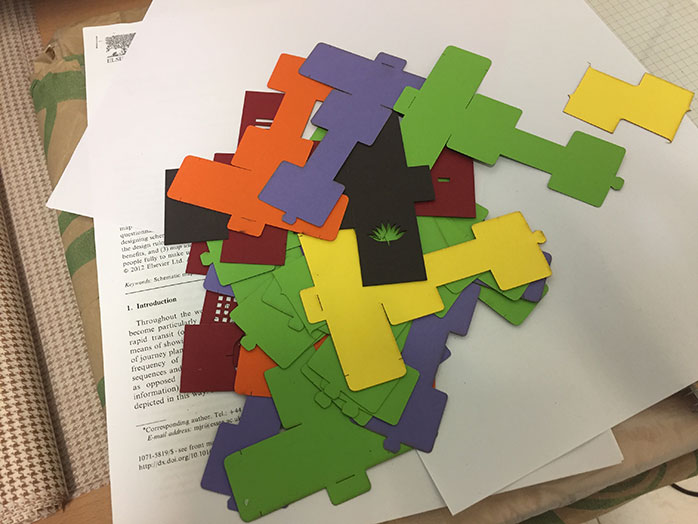Why use paper as a material in introductory packaging design courses?
For the scope of the present course- we restrict ourselves to using paper as the material or substrate. The reasons being- paper is easily available, familiarity with the material, it can be moulded into any form, has variety of colours available and so on. We suggest using paper as a material in elementary packaging courses.
How is paper made?
Paper is made when the cellulose fibres from raw wood (held together by the natural glue lignin) are separated and reorganized. Raw wood is first turned into pulp comprising of cellulose wood fibers, lignin, water, and the chemicals used during the pulping process. Pulping can be achieved mechanically- using machines to grind wood chips into pulp or chemically also known as ‘Kraft’. The mechanical method of grinding results in short fibres leading to weak paper- typically used for newsprint and other low-strength papers. Chemical pulping leads to longer cellulose fibres and thus stronger papers.
Huge machines spray the watery pulp mixture onto moving mesh screens to make a layered mat. The mat of pulp then goes through several processes to remove water and dry it out. Finally, the mat is run through heated rollers to squeeze out any remaining water and compressed into one continuous roll of paper. Depending on what type of paper is desired, the pulp mixture might need to be bleached to create whiter paper. Papermakers use a variety of chemicals to bleach pulp to the colour they want.
World over, wood pulp comes from softwood trees such as spruce, pine, fir, larch and hemlock, and hardwoods such as eucalyptus, aspen and birch. Bamboo, however is the major raw material for paper manufacturing in India as it is a fast growing grass and widely available. Other grasses, plants, fibres from cloth rags and recycled paper are also known to be used in the paper manufacturing process. High durability cellulose fibres from cotton are known to be used in manufacturing currency notes.
Paper making industry leaves a huge environmental footprint considering its use of harsh chemicals, need for large amounts of water, and the resulting contamination risks, as well as trees being used as the primary source of wood pulp.
Types of paper
The density of paper ranges from 250 kg/m3 (16 lb/cu ft) for tissue paper to 1,500 kg/m3 (94 lb/cu ft) for some speciality paper. Printing paper is about 800 kg/m3.
Paper may be classified into seven categories:
• Printing papers of wide variety.
• Wrapping papers for the protection of goods and merchandise. This includes wax and kraft papers.
• Writing papers suitable for stationery requirements. This includes ledger, bank, and bond paper.
• Blotting papers containing little or no size.
• Drawing papers usually with rough surfaces used by artists and designers, including cartridge paper.
• Handmade papers including most decorative papers, Ingres papers, Japanese paper and tissues, all characterized by lack of grain direction.
• Specialty papers including cigarette paper, toilet tissue, and other industrial papers.
Sources:
• https://wonderopolis.org/wonder/how-do-you-make-paper-from-a-tree
• http://www.indianmirror.com/indian-industries/paper.html
• https://www.quora.com/What-kinds-of-trees-are-the-best-for-paper-making
• https://en.wikipedia.org/wiki/Papermaking
• https://en.wikipedia.org/wiki/Paper
• http://www.historyofpaper.net/
General-interest further reading, regarding use of paper in currency manufacture:
https://qz.com/837544/the-making-of-a-rupee-made-for-india-but-not-entirely-made-in-india/
